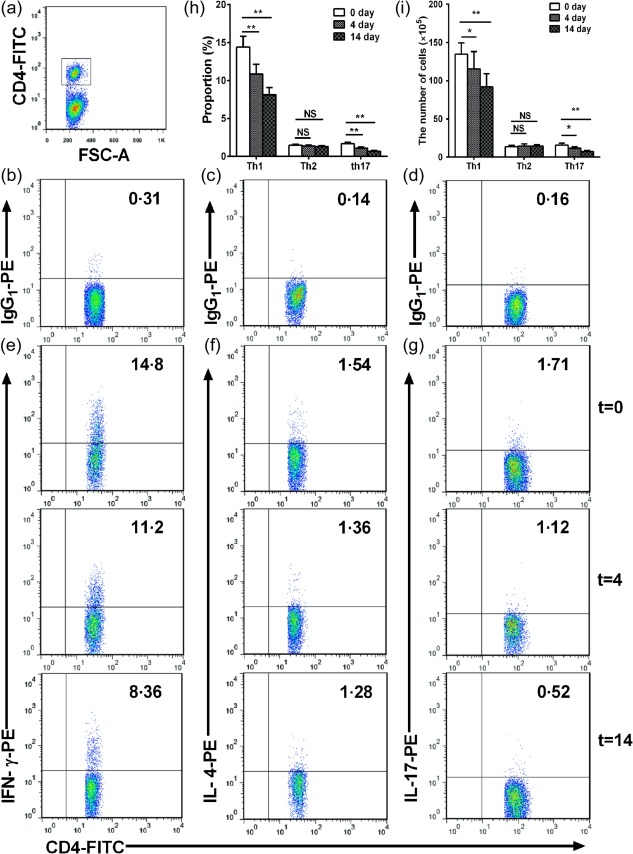Figure 5.

Effects of nasal heat shock protein (HSP)60 on T helper type 1 (Th1), Th2 and Th17 cells in spleens. Apolipoprotein E (ApoE)−/− mice were administered HSP60 nasally for 5 days and were killed 4 and 14 days after the final nasal treatment. Untreated mice (t = 0) were considered controls. (a) CD4+ T cell subsets were gated. (b,d) Representative results for isotype controls in spleens estimated by fluorescence activated cell sorter (FACS) analysis. (e–g) Representative results for Th1 cells, Th2 cells and Th17 cells, respectively, in spleens estimated by FACS analysis. (h) The graphs represent the percentage of Th1, Th2 and Th17 cells in spleens, respectively. (i) The graphs represent the absolute number of Th1, Th2 and Th17 cells in spleens, respectively. *P < 0·05, **P < 0·01, and n.s. P > 0·05. The data are expressed as the mean ± standard error of the mean (s.e.m.) and are representative of at least three independent experiments.
